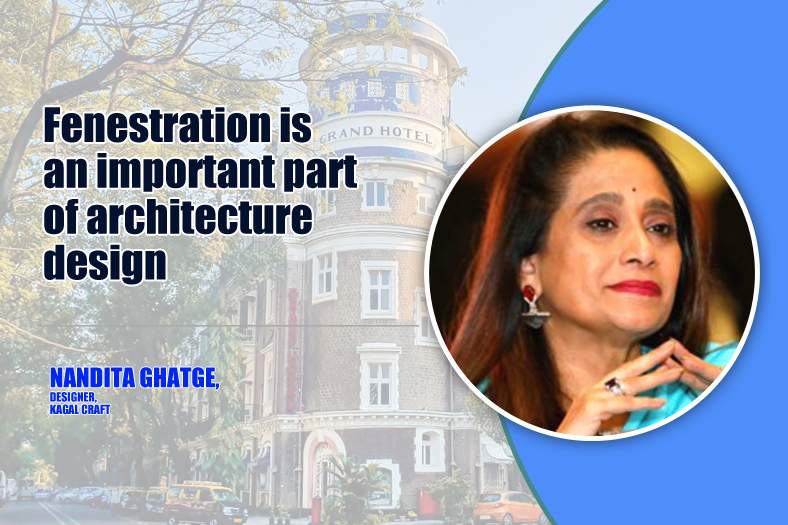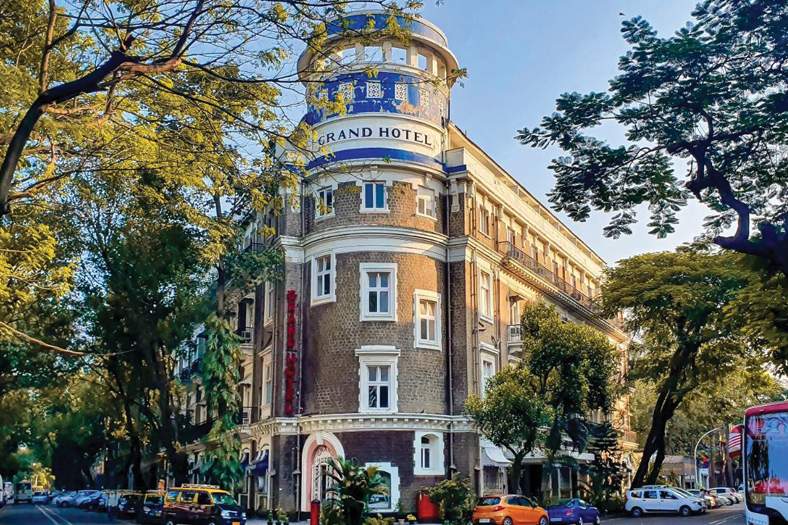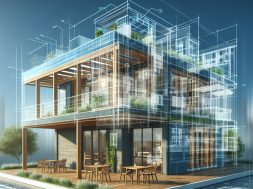
It gives the building its unique character and attempts to blend tradition with modern architecture says Nandita Ghatge, Designer, Kagal Craft
How has the fenestration sector responded to the changes in the building and construction industry?
The first impression of any building is always its facade. Architects strive hard to make that first impression before you enter the premises. Fenestration being a very important aspect of aesthetics. This along with the very important and practical part of letting in light and ventilation. In western cold countries it is also letting in the sun to warm the interiors while in India we wanted the exact opposite. Over the ages, the properties and purpose of fenestration have changed with technology. Air-conditioning and electricity are changing the way we look at the weather. Eventually small jharokha windows gave way to modern glass windows and bigger picture windows. Depending on the weather conditions of particular geographical areas, the size and purpose of windows changed to make the most of the opening. While trying to catch the sun path is also an important part of designing.
In ancient buildings as also traditional Indian architecture what are some of the finest examples of fenestration which have existed for centuries and beyond?
Fenestration is an important part of architecture design, giving the building its unique character. It’s a very important aspect and tool in the hands of the architect. This is what defines the inherent and main character of the building. Fenestration is a form of facade treatment in construction and with balanced openings in the building. This is normally designed as windows, doors, arches, louvers, vents, skylights, storefronts, curtain walls, brick walls and glazed glass surfaces.
The structure of fenestrations in the ancient buildings would often have many decorative elements like sculptures. The stone would be dressed with different architectural ornamentation. It was often an exquisite display of art showing the grandeur of the building. We have some fine examples of this superb workmanship in the colonial buildings of Ballard pier, Mumbai.

Indian traditional architecture was another fine example of fenestration at its best. Traditional Indian architecture often displayed intricately carved wooden balconies and doors with carved pillars .The well proportioned arches was an important part of the Indian fenestration design .There is a rich treasure of facades with their myriad variety of exquisitely carved stone and wooden jaalis .This carved stone jaali allowed a filtered soft light and ventilation .This also helped cool the interiors in the hot Indian summers when there was no electricity, besides giving the much needed privacy to the women folk.
It was from these intricately carved stone jharokas and balconies they would often look on to the hustle and bustle of the city life below without being noticed. Not only did this particular fenestration have aesthetic value but at the same time served other practical purposes. This play of shadow and light on the internal walls added to the part of the mystery that is India. These exotic sculpted arched openings and beams are such an important part of our Indian architecture. Fenestration of panels and walls of carved marble or sandstone screens were often part of palaces and temples.
What is your take on modern day fenestration?
The modern buildings in contrast have lost much of this mystery and beauty, giving way to practicality and economics. The fenestration in some of these characterless buildings are often glass and modern facade cladding. Practicality and starkness have taken over artistic sensibilities. I am sure the younger architects will draw inspiration from our endless treasure and be able to blend our rich fenestration tradition with modern architecture.

Cookie Consent
We use cookies to personalize your experience. By continuing to visit this website you agree to our Terms & Conditions, Privacy Policy and Cookie Policy.









